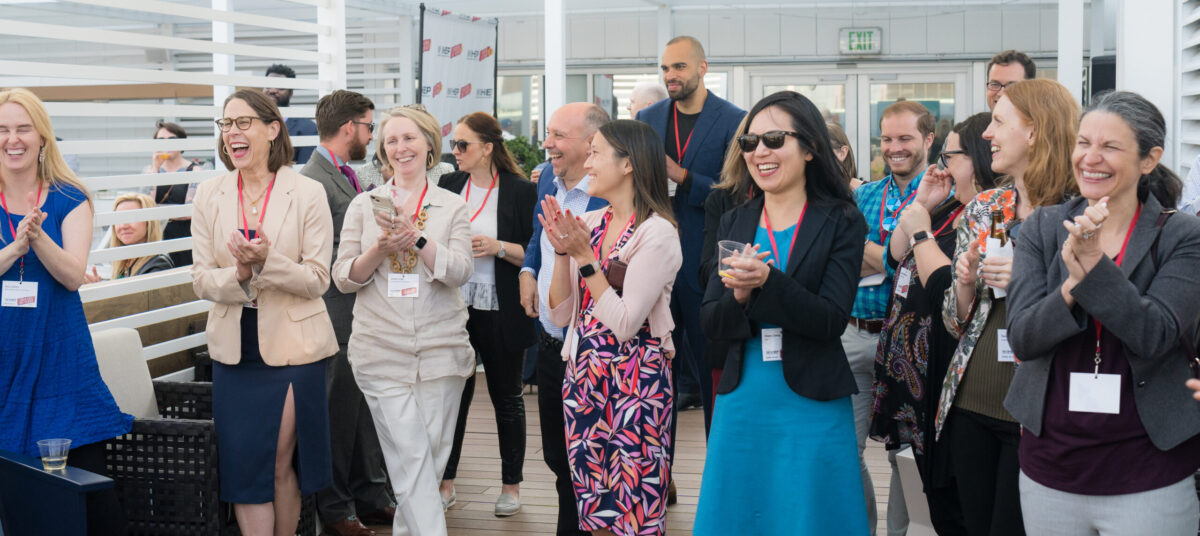A Clear North Star Guiding IHEP at 30 and Beyond: Reflections from IHEP President Mamie Voight
Published May 16, 2023
A few years ago, I had the opportunity to speak with a student about her experience pursuing a college education, and this student left an indelible mark on my mind. A typical day included studying and classwork, feeding and preparing her young children to be cared for by a family member, driving to her rural college campus—if she had gas money that week, counting on her on-campus job to offer granola bars so she could eat during the workday… and hoping that one small disruption such as a surprise expense would not upset her carefully planned yet precarious routine.
Her reflections informed IHEP’s Cost of Opportunity analysis, a project that sought to illuminate the financial barriers to college access and success and featured the voices and stories of real students. That working mother and college student was determined to earn a degree because she knew that with that credential in hand, she would have the best opportunity to provide for the needs of her children.
As we enter our 30th year of working to expand college access and success for all students, I am reminded of this student, the realities of her circumstances and the challenging systems she navigated to manage her academic and caretaking responsibilities. The distance between her campus and childcare meant budgeting a long commute time. And intricacies of financial aid eligibility rules meant she had to find a way to pay for her last semester without scholarships or loans. At IHEP we do what we do for that student and the millions of other students who decide every day that pursuing and earning a college education is an investment that will pay dividends, despite the precariousness its pursuit may present.
For 30 years our rigorous, student-centered, data-informed, and equity-focused research has provided college leaders, policymakers, and advocates with insights, lessons, recommendations, and solutions. Most importantly, we have made an impact.
We’ve challenged the field by building momentum for higher quality, disaggregated data to bring inequities to light and point towards solutions; defining postsecondary value in terms of providing opportunities for economic mobility and a better life for students who have been historically marginalized; and calling out deep-seeded inequities in our college admissions system.
IHEP recently undertook a strategic planning process to interrogate how we operate, organize ourselves, and leverage our resources. That organization-wide exercise created the space to reflect on who we are, what we do, who we want to be, and how we can best support student success. We asked ourselves, “Do the words we use reflect our motivating goals and desired impact?”
Those important questions and illuminating discussions led us to revisit our mission and vision statements. Together, we decided that our 30-year milestone called for a bolder, more aspirational frame that reflects the large scale change we truly seek.
Today, I am delighted to share IHEP’s new North Star vision and mission:

By working towards this vision of a more just and equitable society, we are challenging ourselves to capitalize on the best that higher education has to offer and to examine the structures, systems, and circumstances that stand in the way of higher education maximizing its potential. Through our research we rebuild those structures, rework those systems, and strive to remove circumstantial barriers to enable more students to realize the transformational benefits a college credential can provide. We are explicitly orienting our mission around advancing equitable outcomes for historically marginalized communities: Black, Hispanic and/or Latinx, Indigenous, Asian American, Native Hawaiian, and Pacific Islander students, and students living with low and moderate incomes.
Together, these statements are the clear equity-centric North Star to guide our work. They provide clarity around what we do and who we do it for.
Higher education, on its own, cannot solve centuries of racism, classism, and discrimination facing communities of color and people living with lower incomes. But higher education can and must do its part to help right those wrongs. It can and must be a lever for intergenerational mobility and narrowing the racial wealth gap. It can and must lay the foundation for a better life and fortified economic security for generations to come.
After nearly ten years on Team IHEP, I’m humbled and honored to be at the helm of an organization that I love dearly. Together, with the stewardship of our board of directors, the talent, commitment, and professionalism of the IHEP staff, and the innumerable partnerships with fellow researchers and student success advocates, IHEP is poised for another 30 years (and more!) of examining and rebuilding structures to make the promise of higher education a reality for more students.
Thank you for your interest in our work and your commitment to our nation’s students.


